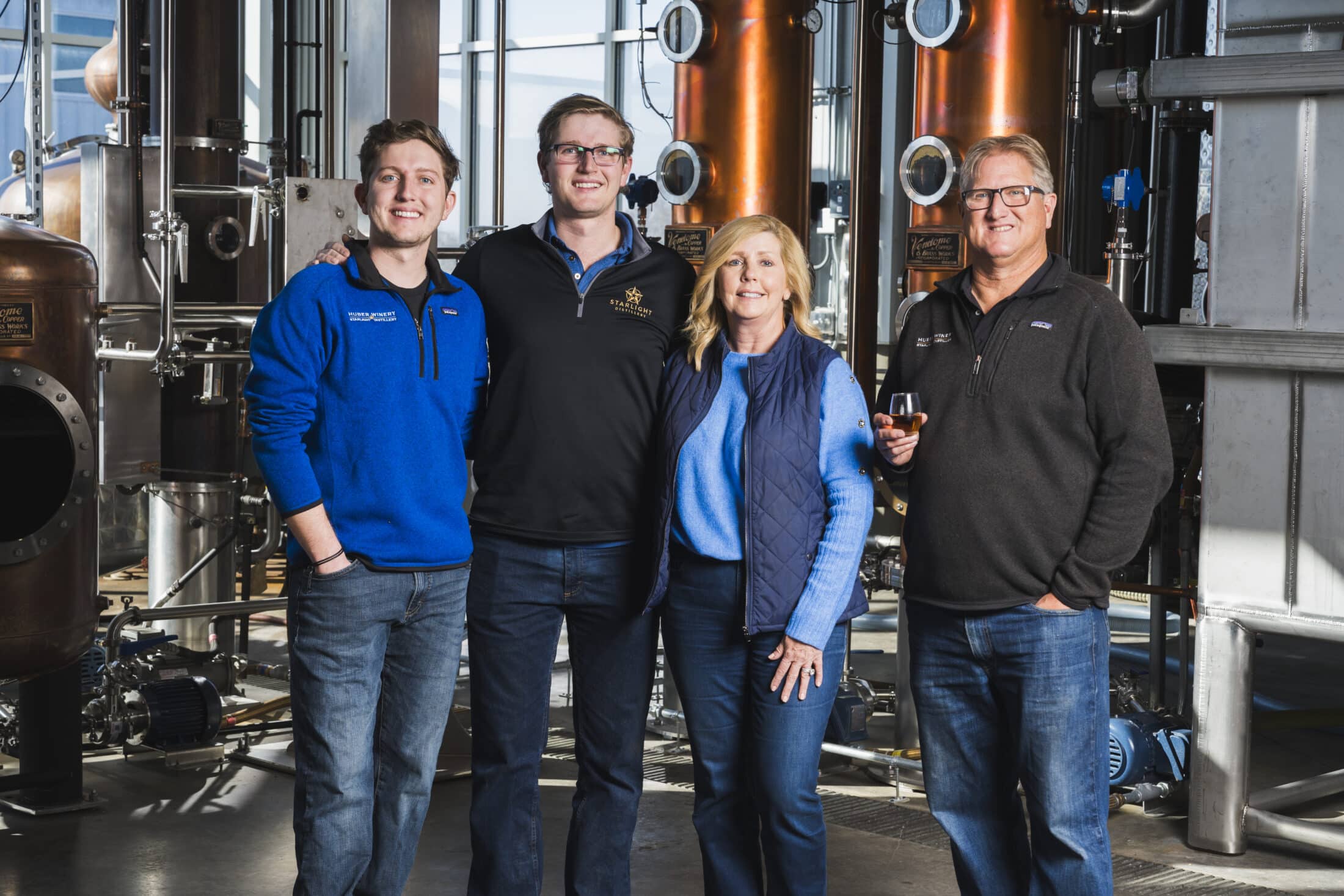Starlight Distillery invests $200,000 MRG in tech-enabled distillation equipment, advancing its nearly 2-century commitment to sustainability, diversification and quality.
Starlight Distillery
Case Study
Key Stats
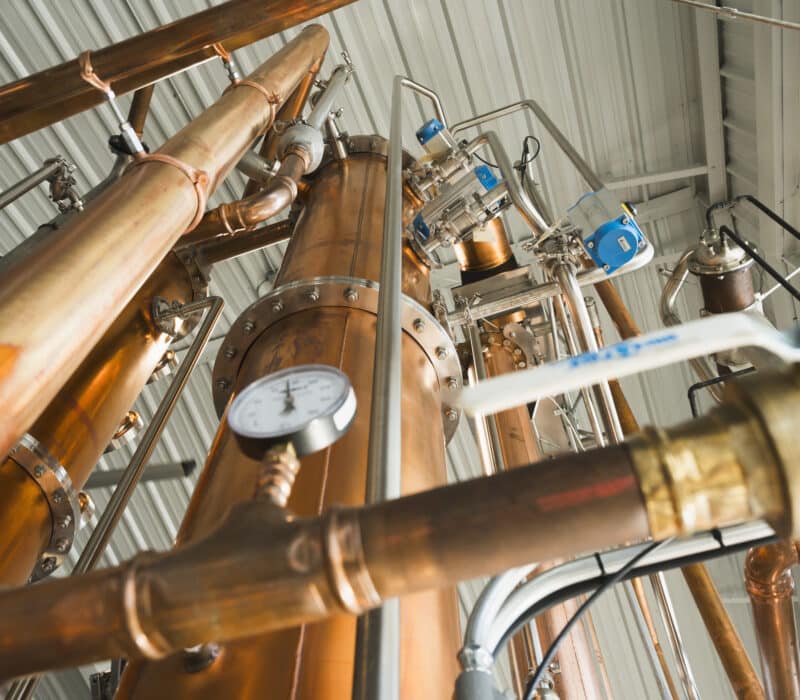
Company History
Since 1843, seven generations of his family have built on Simon Huber’s farming legacy, promoting environmentally sound, successful farming and business practices.
When Simon emigrated from Baden-Baden, Germany to Starlight, Indiana in 1843, he planted grapes and sowed the seeds of a family future known today as Huber Orchards. Simon’s dream began with grapes, and today’s working farm grows healthy fruits and vegetables that reflect the family’s philosophy of “Farm First.” Diversification has expanded and enriched the business, now covering more than 700 acres in Starlight, Ind., where customers can harvest their own berries in the spring, vegetables in the summer and pumpkins in the fall. The Farm Market is open year-round for fresh seasonal produce, and the Family Fun Park provides “something for everyone,” including mazes, a mining experience, mini tractors, a playground, pedal karts and more. The Starlight Cafe and Starlight Pizza Kitchen are open for lunch, a midday snack or fine dining and an ice cream shop and bakery encourage visitors to linger. The award-winning Plantation Hall hosts weddings, company outings and upscale events with catering, on-site event planning and all-inclusive packages.
Huber Farms also is home to one of the oldest and largest distilleries and estate-grown wineries in Indiana. Huber Winery and Starlight Distillery’s operating missions are to craft unique and high-quality wine and spirits that showcase the farm’s rich, fertile soil and promote environmentally sound stewardship of the land. Sustainability is key to the Huber company’s goals of environmental health, economic profitability and social and economic equity for the family, the community and customers. Passing those virtues on to an eighth and ninth generation of Hubers is a priority; one example is the involvement of a then-13-year-old Blake Huber in the industry’s advocacy efforts a quarter-century ago to allow small wineries and distilleries to improve outreach to customers through on-site tasting rooms and tours. Their efforts proved successful, and Huber was the first to apply for a craft distillery license under the new law. Today there are more than 70 of these licenses in Indiana, and Blake and his brother Christian are Distillers at Starlight Distillery.
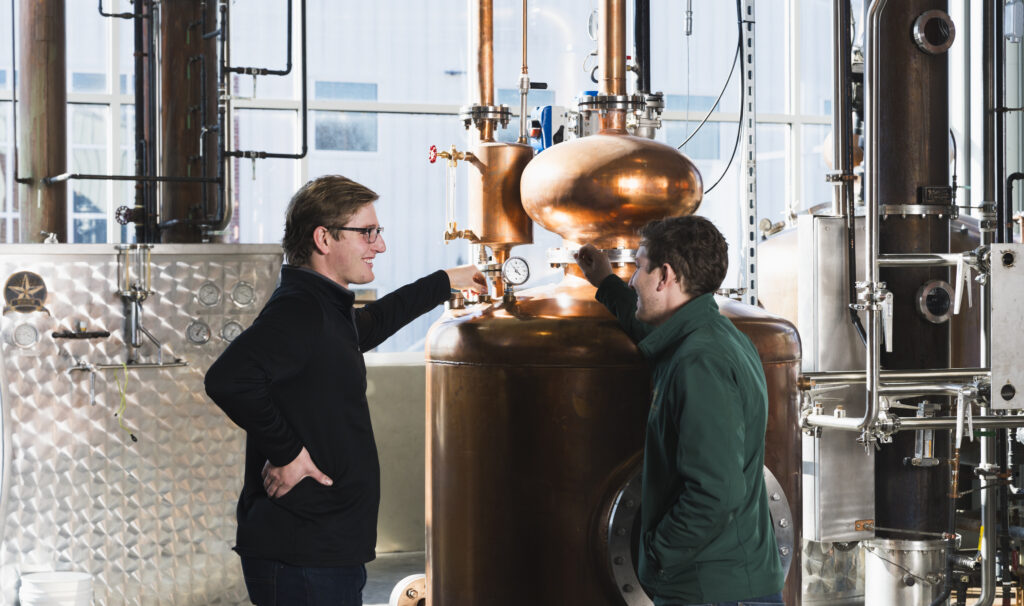
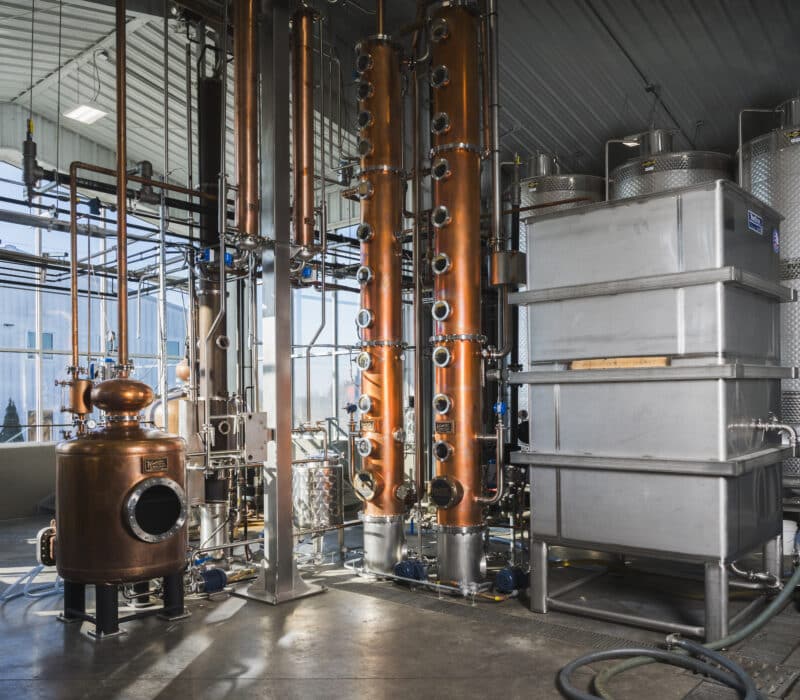
The Project
Starlight Distillery’s MRG project increased production from three to four barrels a day to 18 to 20 barrels in a nine-hour run – a difference of nearly 2 barrels per hour.
Several years ago when Huber installed its first pot still for distilling spirits, the idea was to expand later into a larger pot still, Blake explained. “My brother Christian and I had some questions about going into column distillation based on efficiency and consistency. But we knew there was a lot more design integration if we went that way.” The company could increase volume simply by purchasing a new, larger pot still, he explained. That’s what many distillers on a path to success do. But changing to column distillation with continuous operation capabilities was an entirely new concept. A niche market, upfront costs and the technical aptitude requirements for column distillation combine to make a formidable barrier that small and medium-sized distilleries may never overcome without incentivization. “That was the difference between an airplane and a space shuttle,” Blake said. “You can incrementally make an airplane into a space shuttle. Not that this is rocket science, but out of 2,300 distilleries in the U.S., only a small number are ever going to make that leap to column distillation, and they will likely be the huge companies, the large corporations.”
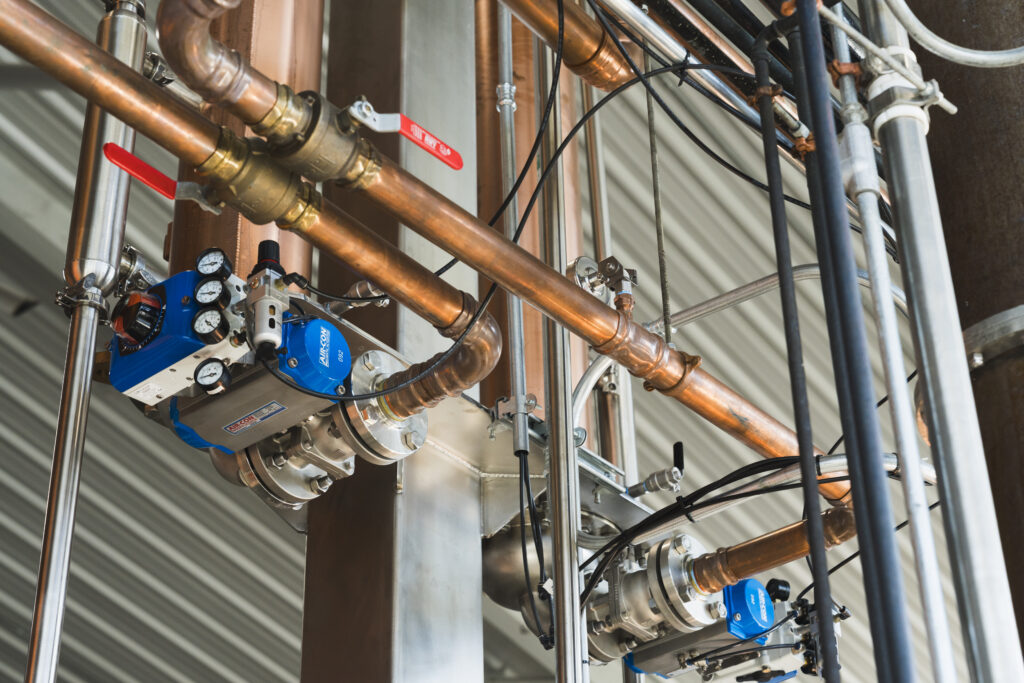
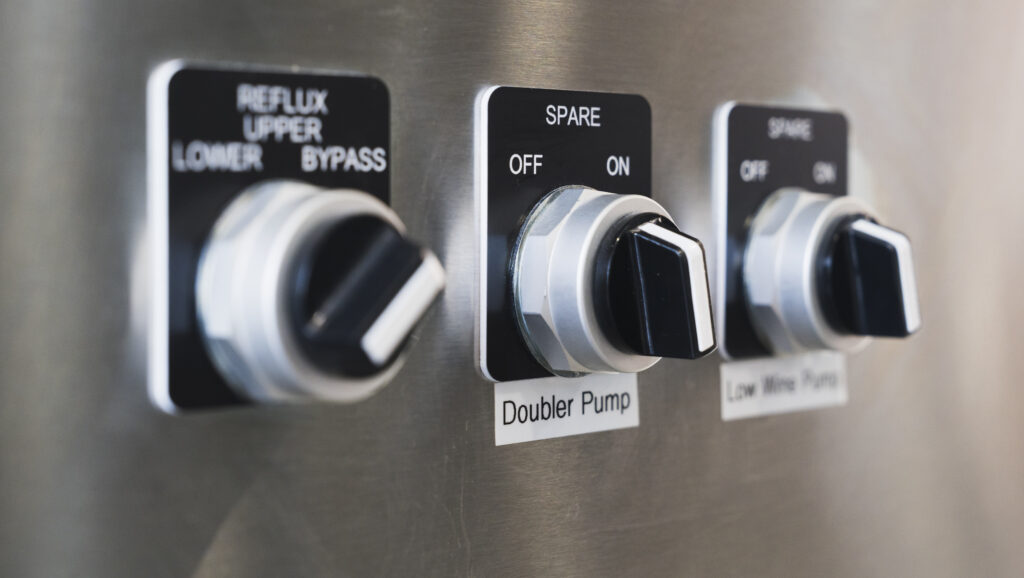
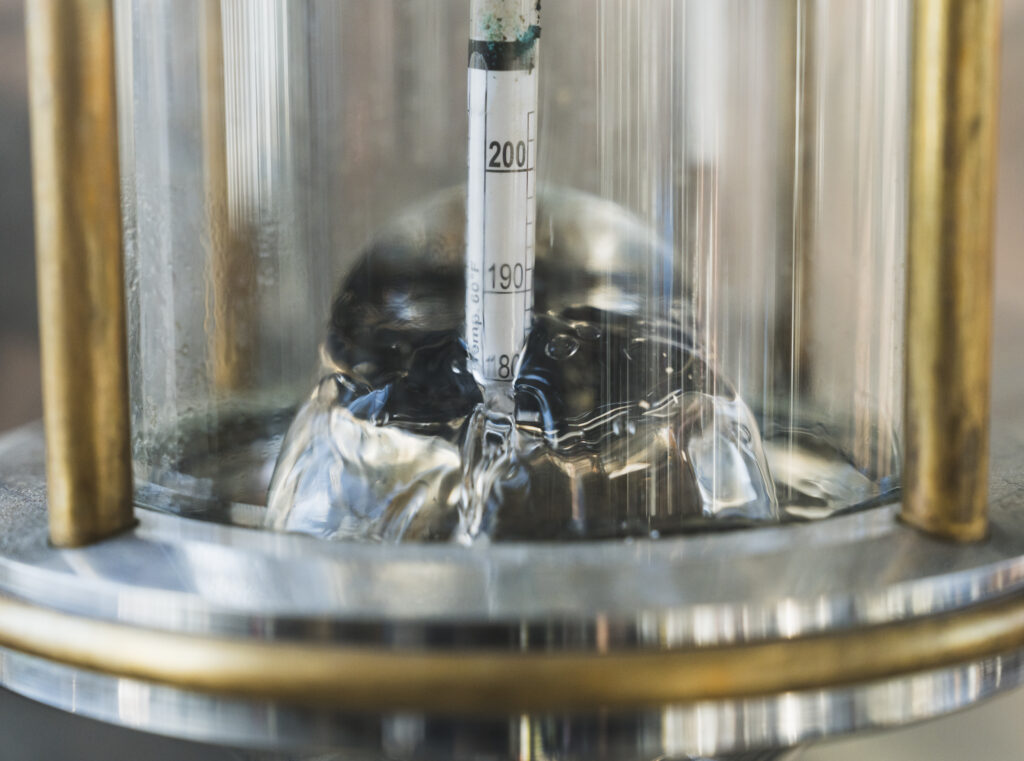
Pot stills have been around since the 15th Century, and still today they operate primarily batch by batch. That is, distill a single batch, then clean the pot and start on a new batch. Column stills, on the other hand, can be operated continuously, providing greater production capability. Another significant difference: while pot stills, after repeated distillations, can offer 60 to 80% alcohol by volume (ABV), column stills can provide 96% ABV. Flavor differentiations exist as well, with pot stills preferred for single malt Scotch, and column stills typically chosen for gin and vodka.
“The technology, knowledge and cash flows that go into a project like this are much more substantial with the column still,” Blake added. “Our production on the 500-gallon Vendome copper pot was somewhere between three and four barrels a day or about 1,000 gallons. We’ll now run 6,000 gallons through the column still in the same amount of time.” “Installing the column still was one step of a very complicated process,” Blake said. “We reworked our entire air system, our boiler system, built around some new tanks and the whole cooker system. For a small facility like ours, it took years to get to this point.”
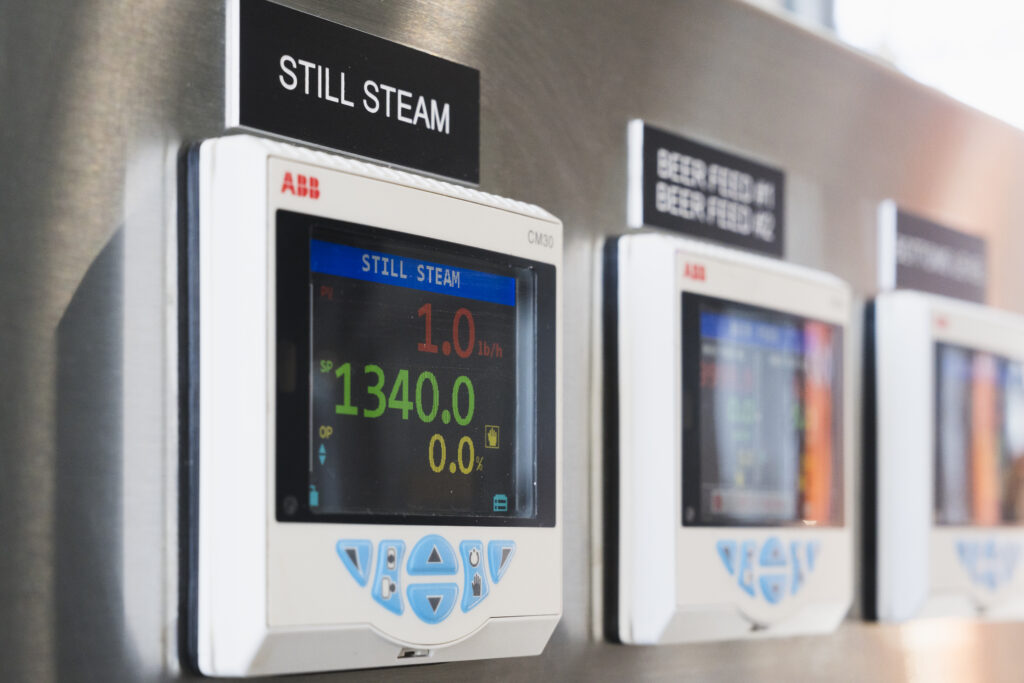
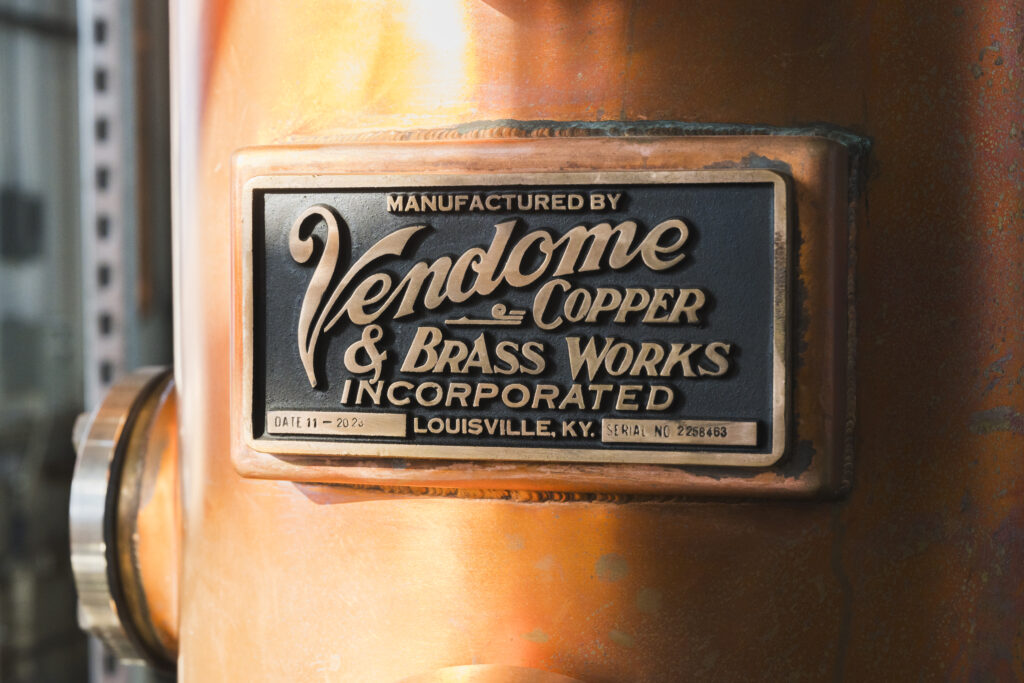
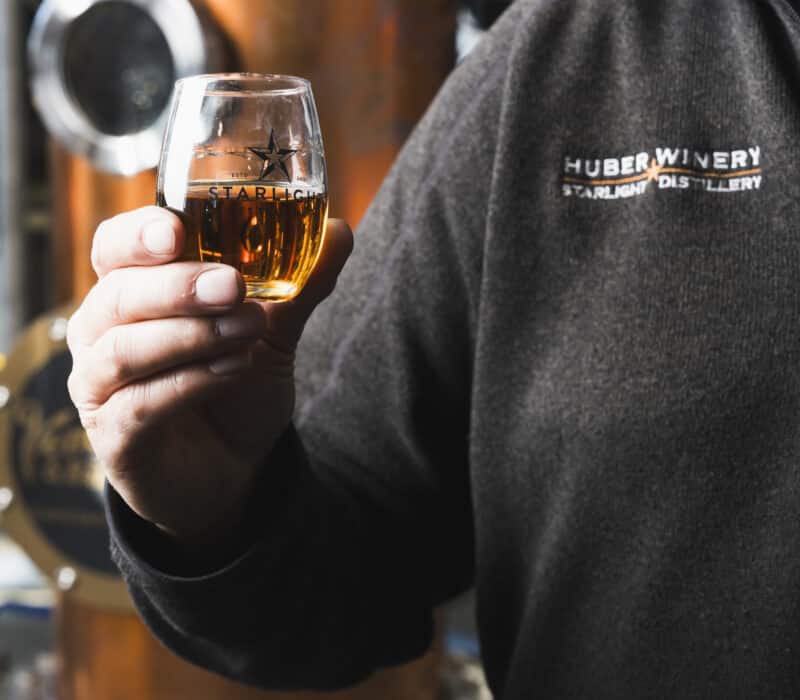
Sustainability and Product Diversification
The project compliments Starlight Distillery’s impactful reuse of waste materials and has accelerated their ability to add new product lines.
Huber Orchards doesn’t just talk about sustainability—it’s worked into the company in many ways. “Everything that comes off the column still as a byproduct of the distillation process will be given to farmers around the area to feed their cattle,” said Starlight’s Vice President of Distribution and Public Relations Dana Huber. “The way we’ve always done business is family- and community-oriented. We’re supporting you in any way we can. And that helps improve the quality of life for our community.”
In addition to repurposing spent grain, the company has initiated an innovative finishing cask program that recycles casks or barrels from around the world that would otherwise be destroyed and uses them in the final aging step to showcase the versatility of their spirits.
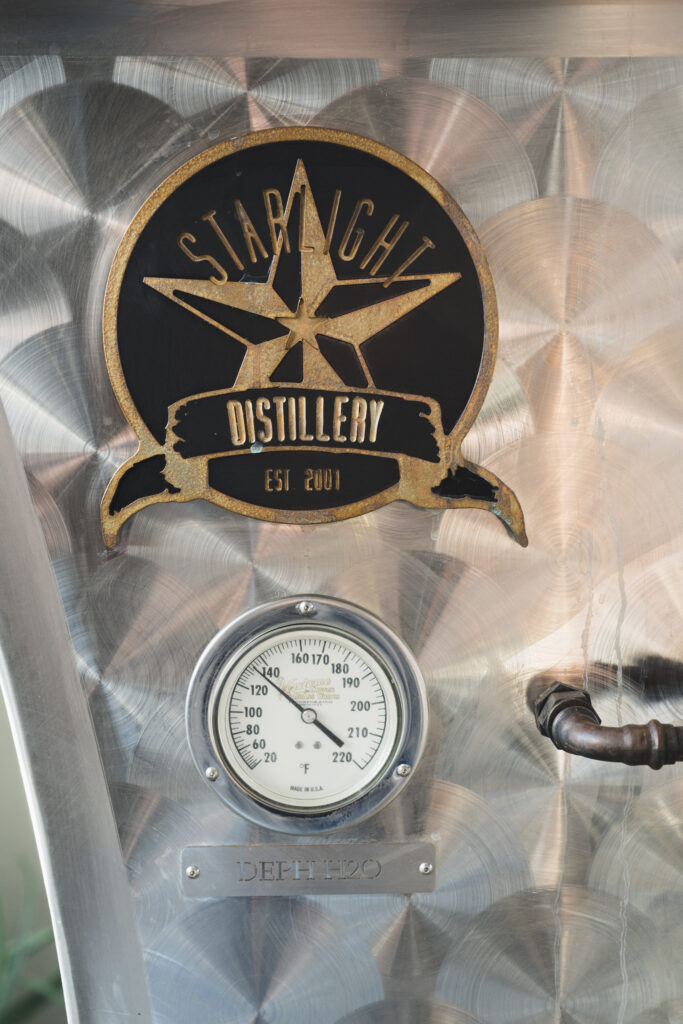
“My brother Christian and I wanted to take these barrels, very individual high-quality barrels and make a blend,” Blake explained. “Every single one of these finishing barrels is analyzed to be sure it’s true to what the supplier says. Once we find the different profiles we like for finishing barrels, we know that we’re going to have a superior, high-quality product that’s unique to the marketplace. If we have a cabernet barrel that we think would be great for finishing whiskey, we’ll use some of those. Every single barrel here on the property has multiple uses and purposes. We’re getting a life from that barrel that’s two to three times the industry standard.” Finishing cask details are well-documented through internal quality control – allowing Starlight to reference data to appropriately scale crowd-pleasing products by directly pursuing barrels with the most desirable finishing attributes.
Manufacturing Readiness Grants (MRG) provided by the Indiana Economic Development Corporation and administered by Conexus Indiana are available to Indiana manufacturers willing to make capital investments to integrate smart technologies and processes that improve capacity. An MRG award of $200,000 helped the Huber family continue its commitment to invest in its agricultural, wine-making and spirits holdings in Southern Indiana.
Far from using automation to reduce headcount or workforce costs, Starlight Distillery is already seeing increased employment at all levels and all skills – and has leveraged their industry’s subject matter experts.

Even as the distillation column project was in the design and installation stages, Starlight Distillery leadership was calculating how much growth would be needed throughout the organization to support the increased production levels and developing strategies for finding and onboarding that increased workforce. Connor Ballard is an example. He grew up in Kentucky and worked for a start-up in Bardstown that was running a 36-inch continuous column like the system Starlight was installing, but larger. “He helped start that production facility and learned so much,” said Blake. “We hired him, and he joined us with a level of comfort from that experience. He worked along with my father, my brother and me to teach some of the other people in the facility. His knowledge and experience helped make that first run as flawless and consistent as possible. We realized that, if we were going to this level of advanced system, we needed to get even more domain space expertise and experience. Connor was on-site two years before we fired the new still up and was an important part of the process.”
“For us, increasing production actually meant we need more employees – not just on the production site, either, but throughout the company — the bottling facilities, our sales force, compliance officers, graphic design,” Dana said. “There’s so much more going on as we grow to a national and international brand.”
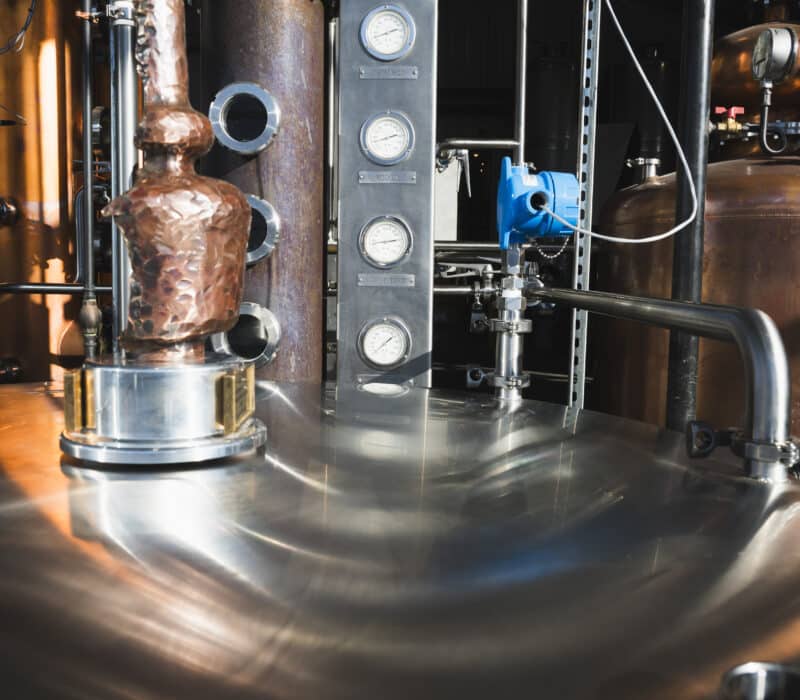
Business Growth, Partnerships, and Shared Learnings
Starlight’s advice: take advantage of Indiana programs that support manufacturing, and the help and advice of contemporaries in your industry to benefit your smart tech project to help avoid costly mistakes.
“Historically, we’ve been a farm since 1843, and always focused on the fruit. We always grew grapes and we always made wine,” said Blake. “Several of our German family branches still own wineries. And we’ve gained a great deal from the support the State of Indiana and Indiana professional groups have provided, too.” Starlight’s Compliance Director pointed to programs such as the Export Indiana Accelerator Program (EIAP) of the Indiana Small Business Development Center (ISBDC). The EIAP is an annual 12-week program that provides businesses with professional export guidance and resources to aid in the creation of an executable, proactive export business plan. There’s no charge for the program and participants receive more than $10,000 in expert professional services. “This was the inflection point for us,” Jerome acknowledged. “It’s helping us transition from a craft Midwest brand that’s in 10 to 15 states, into a national and international brand.”
Jerome explained that he and Dana took the EIAP together. “Now we’re expanding sales and distribution in Canada and are hoping to get into Ontario through the LCBO (the Liquor Control Board of Ontario), the government agency that oversees alcohol sales and distribution throughout the province. Indiana really does have a good set of programs to assist small-to-medium sized businesses in the state.”
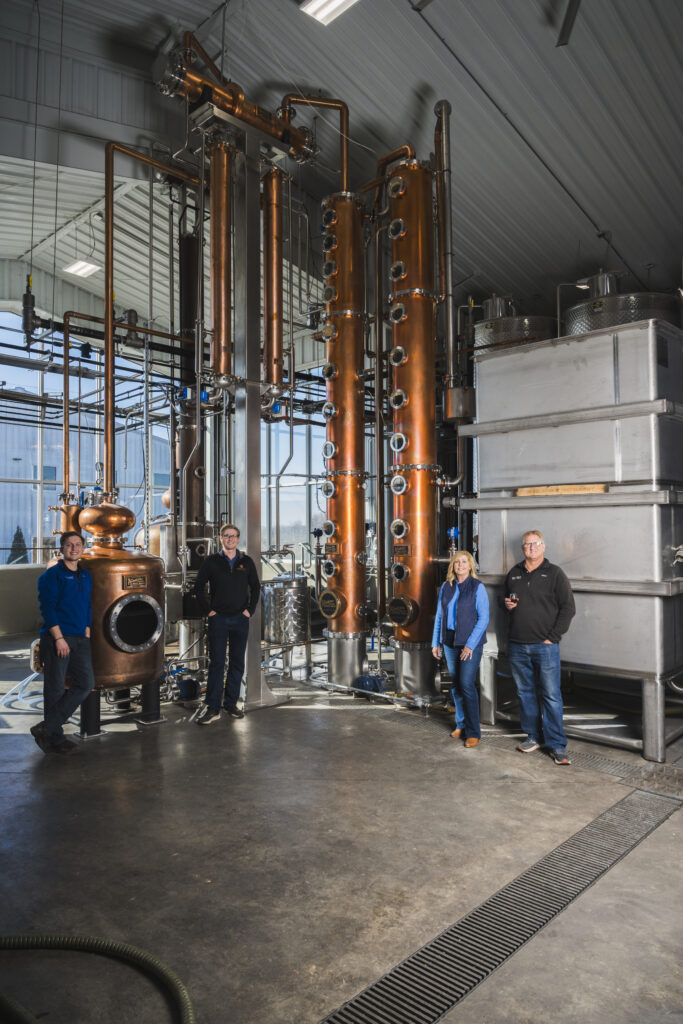
State programs were vital to the project’s success, but so were fellow wineries and distilleries. The craft spirits industry respects well-established family businesses and embodies the approach of succeeding together. “Obviously we have competitors out there, but there’s a very tight-knit community within it, even including some of the larger distilleries. There are a lot of good connections, and we had the opportunity to visit and run their column stills and see the process,” said Blake. They even visited Southern Distilling in North Carolina where an 18-inch continuous column much like Starlight’s was running. “We could look at their layout and ask questions. This has been a game-changer for us.”
Earning a Manufacturing Readiness Grant helped accelerate Starlight’s project timeline and support a more costly tech-integrated investment.
“The great thing about the MRG is that we always had plans to complete this project, but being awarded $200,000 helped us reinvest back into the company and continue to drive the innovation, the automation, the technology side of things forward while still staying true to our roots,” Dana commented. The Manufacturing Readiness Grants program helped to enable additional equipment options such as the still’s advanced human-machine interface (HMI), as well as safety integration measures that would have been cost-prohibitive without assistance. “It would have been a lot more difficult to manage the project without the grant. I couldn’t sleep for a couple of nights before we fired up the equipment. You never know what can go wrong. It was a great award for us and the family and being able to continue to drive the business and the family forward. It would have been a lot more difficult without the MRG.”
